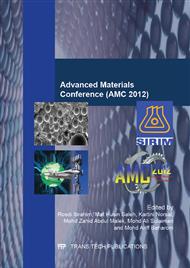p.79
p.85
p.90
p.96
p.102
p.107
p.112
p.119
p.128
Innovative Metal Injection Molding (MIM) Method for Producing CoCrMo Alloy Metallic Prosthesis for Orthopedic Applications
Abstract:
Powder injection molding (PIM) is a powder metallurgy process currently used for the production of complicated and near net shape parts of high performance materials [. This technique basically combines the advantages of plastic injection molding and the versatility of the conventional powder metallurgy technique. The process overcomes the shape limitation of powder compaction, the cost of machining, the productivity limits of isostatic pressing and slip casting, and the defect and tolerance limitations of conventional casting [1, 2, . According to German and Bose [, the technology of metal injection molding (MIM) is more complicated than that of the plastic injection molding, which arises from the need to remove the binder and to densify and strengthen the part. The process composed of four sequential steps: mixing of the powder and organic binder, injection molding, debinding where all binders are removed and sintering [1, 2, 3, 4]. If it necessary, secondary operations such as heat treatments after sintering can be performed [1, 2, 3, 4, .
Info:
Periodical:
Pages:
102-106
Citation:
Online since:
January 2014
Price:
Сopyright:
© 2014 Trans Tech Publications Ltd. All Rights Reserved
Share:
Citation:


